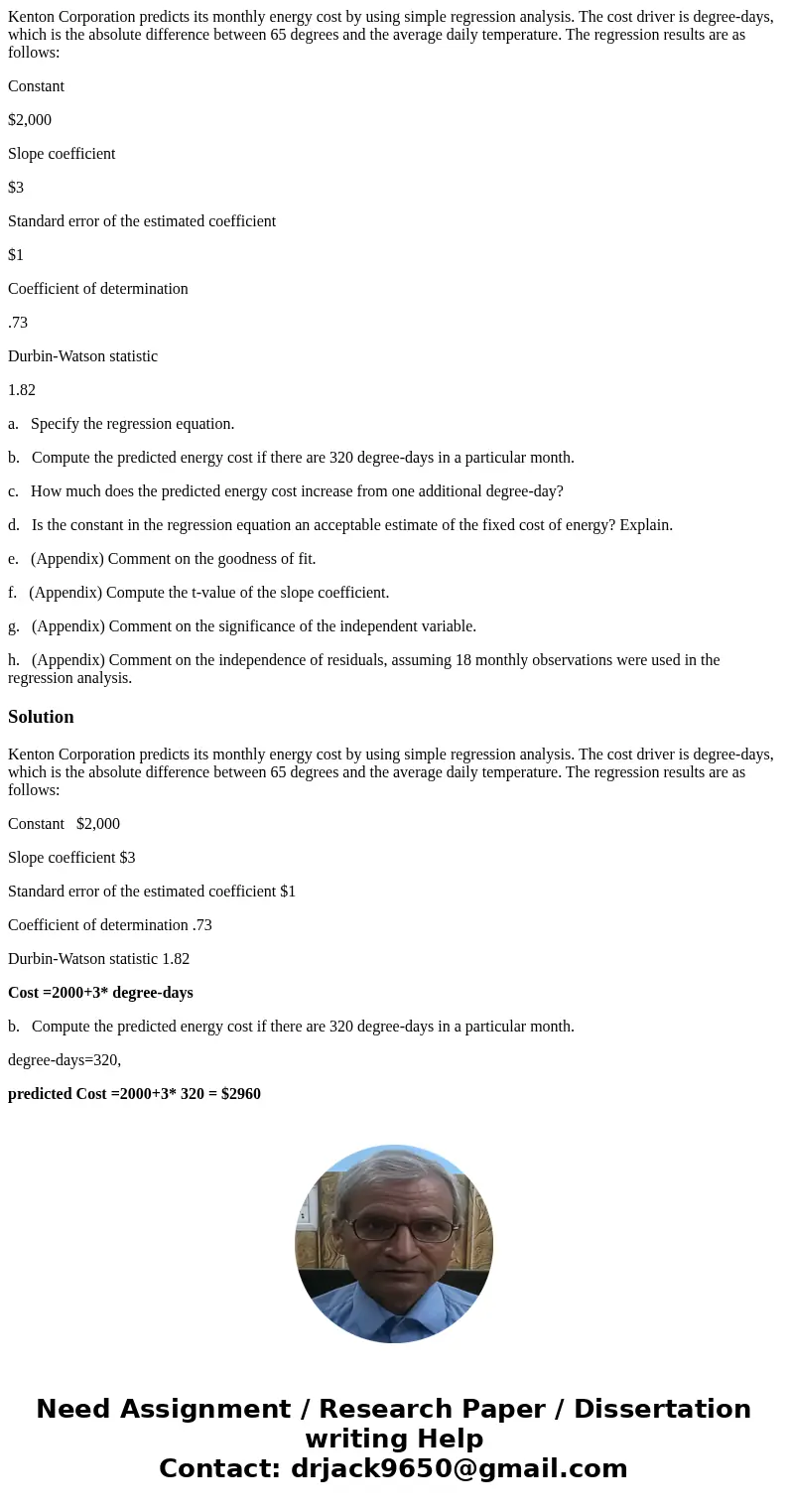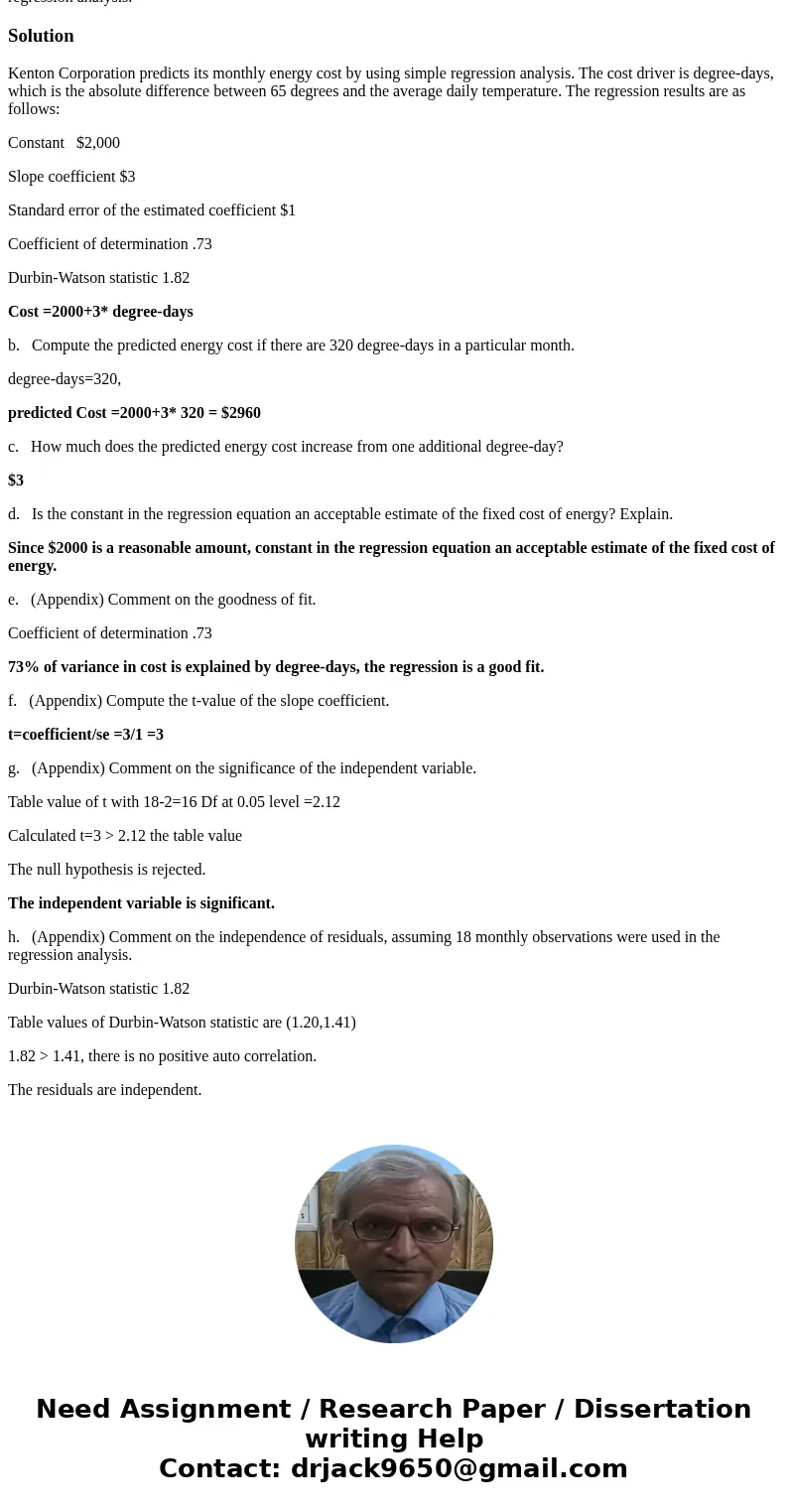Kenton Corporation predicts its monthly energy cost by using
Kenton Corporation predicts its monthly energy cost by using simple regression analysis. The cost driver is degree-days, which is the absolute difference between 65 degrees and the average daily temperature. The regression results are as follows:
Constant
$2,000
Slope coefficient
$3
Standard error of the estimated coefficient
$1
Coefficient of determination
.73
Durbin-Watson statistic
1.82
a. Specify the regression equation.
b. Compute the predicted energy cost if there are 320 degree-days in a particular month.
c. How much does the predicted energy cost increase from one additional degree-day?
d. Is the constant in the regression equation an acceptable estimate of the fixed cost of energy? Explain.
e. (Appendix) Comment on the goodness of fit.
f. (Appendix) Compute the t-value of the slope coefficient.
g. (Appendix) Comment on the significance of the independent variable.
h. (Appendix) Comment on the independence of residuals, assuming 18 monthly observations were used in the regression analysis.
Solution
Kenton Corporation predicts its monthly energy cost by using simple regression analysis. The cost driver is degree-days, which is the absolute difference between 65 degrees and the average daily temperature. The regression results are as follows:
Constant $2,000
Slope coefficient $3
Standard error of the estimated coefficient $1
Coefficient of determination .73
Durbin-Watson statistic 1.82
Cost =2000+3* degree-days
b. Compute the predicted energy cost if there are 320 degree-days in a particular month.
degree-days=320,
predicted Cost =2000+3* 320 = $2960
c. How much does the predicted energy cost increase from one additional degree-day?
$3
d. Is the constant in the regression equation an acceptable estimate of the fixed cost of energy? Explain.
Since $2000 is a reasonable amount, constant in the regression equation an acceptable estimate of the fixed cost of energy.
e. (Appendix) Comment on the goodness of fit.
Coefficient of determination .73
73% of variance in cost is explained by degree-days, the regression is a good fit.
f. (Appendix) Compute the t-value of the slope coefficient.
t=coefficient/se =3/1 =3
g. (Appendix) Comment on the significance of the independent variable.
Table value of t with 18-2=16 Df at 0.05 level =2.12
Calculated t=3 > 2.12 the table value
The null hypothesis is rejected.
The independent variable is significant.
h. (Appendix) Comment on the independence of residuals, assuming 18 monthly observations were used in the regression analysis.
Durbin-Watson statistic 1.82
Table values of Durbin-Watson statistic are (1.20,1.41)
1.82 > 1.41, there is no positive auto correlation.
The residuals are independent.


 Homework Sourse
Homework Sourse